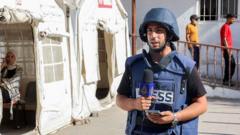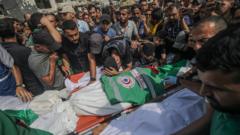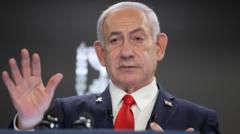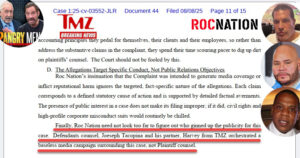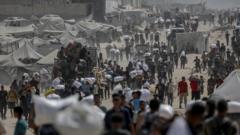As Israel's military admits to operational errors leading to the deaths of medics in Gaza, the ramifications spark debates on accountability and humanitarian laws in conflict zones.
Israeli Military Acknowledges Failures in Gaza Medics' Deaths

Israeli Military Acknowledges Failures in Gaza Medics' Deaths
Investigations reveal 'professional mistakes' behind deadly attack on rescue workers, resulting in disciplinary action.
The Israeli military released details of an investigation regarding a deadly attack on medics in Gaza last month, admitting to “several professional failures” that resulted in the deaths of 14 rescue workers and a U.N. employee. The military previously confirmed it carried out the attack in Rafah, southern Gaza, but had provided inconsistent explanations for why its troops targeted emergency vehicles. This act has drawn international condemnation and has been labeled by experts as a potential war crime.
In the latest statement, the military acknowledged the soldiers faced an "operational misunderstanding," claiming that ground troops believed they were confronting a legitimate threat. Furthermore, the military recognized breaches of orders when they fired upon the U.N. vehicle as well as ambulances and a fire truck from the Palestine Red Crescent Society and Civil Defense.
The investigation determined that poor visibility at night played a significant role, preventing the deputy commander on the scene from identifying the aid vehicles as non-combatant. Witness accounts, along with video evidence from one of the deceased medics' cellphones, clarified that the emergency vehicles were marked and had their lights activated, contradicting earlier military assertions that they advanced "suspiciously."
In the aftermath of the attack, soldiers reportedly buried many of the bodies in a mass grave and destroyed the ambulances and the U.N. vehicle, an action the military now admits was improper. Moving forward, the military intends to reprimand the brigade commander for his overall responsibility while dismissing the battalion’s deputy commander for his role in reporting misleading information.
This incident further amplifies discussions on accountability within the Israeli military during ongoing conflicts and the treatment of humanitarian responders in warfare. It reflects the complexities faced by armed forces in distinguishing combatants from non-combatants, raising important questions about adherence to international humanitarian law.
In the latest statement, the military acknowledged the soldiers faced an "operational misunderstanding," claiming that ground troops believed they were confronting a legitimate threat. Furthermore, the military recognized breaches of orders when they fired upon the U.N. vehicle as well as ambulances and a fire truck from the Palestine Red Crescent Society and Civil Defense.
The investigation determined that poor visibility at night played a significant role, preventing the deputy commander on the scene from identifying the aid vehicles as non-combatant. Witness accounts, along with video evidence from one of the deceased medics' cellphones, clarified that the emergency vehicles were marked and had their lights activated, contradicting earlier military assertions that they advanced "suspiciously."
In the aftermath of the attack, soldiers reportedly buried many of the bodies in a mass grave and destroyed the ambulances and the U.N. vehicle, an action the military now admits was improper. Moving forward, the military intends to reprimand the brigade commander for his overall responsibility while dismissing the battalion’s deputy commander for his role in reporting misleading information.
This incident further amplifies discussions on accountability within the Israeli military during ongoing conflicts and the treatment of humanitarian responders in warfare. It reflects the complexities faced by armed forces in distinguishing combatants from non-combatants, raising important questions about adherence to international humanitarian law.


